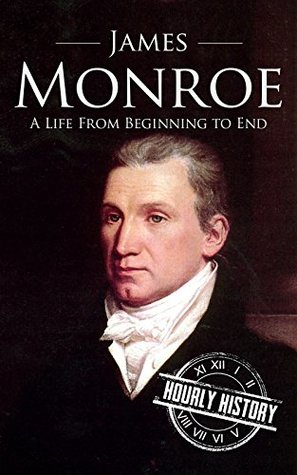More on this book
Kindle Notes & Highlights
Read between
April 9 - April 10, 2018
Monroe was the first American president to travel on a steamboat.
he died on July 4,
James Monroe came from a royalist background;
When he was eleven years old, James Monroe was a student at a school run by the Reverend Archibald Campbell; another student was John Marshall, who would after the new country was formed, become the Supreme Court’s Chief Justice.
Spence Monroe died in 1774; Elizabeth Monroe also died when Monroe was a teenager, but the exact date is not known.
Monroe was hit in the shoulder by a musket ball that severed an artery
Monroe didn’t bleed to death, and the young soldier spent the following three months recovering from his wounds, although the musket ball would remain in his shoulder for the rest of his life.
Trenton would be the only battle in which Monroe would fight,
last of the Founding Fathers with Revolutionary War experience in his...
This highlight has been truncated due to consecutive passage length restrictions.
The Capture of the Hessians at Trenton,
Washington Crossing
Monroe, who never showed much of a bent for the agricultural role that his fellow Virginia planters displayed, sold the plantation that he had inherited from his father.
study law under George Wythe in Williamsburg,
Richmond, where he studied under Thomas Jefferson.
member of the Continental Congress.
Elizabeth Kortright
financial fortunes had suffered during the Revolutionary War because of Kortright’s loyalist sympathies.
voted against the ratification of the Constitution when he served as a delegate to Virginia’s convention for ratification.
Monroe was sent to France to serve as the country’s minister in 1794.
Monroe came to Paine’s rescue, secured his release from prison, and let Paine move into his home in Paris.
John Jay, the negotiator, had refused to provide Monroe with a copy of the treaty.
Washington’s reasons were specific as he cited Monroe’s “inefficiency, disruptive maneuvers, and failure to safeguard the interests of his country.”
“Monroe was so honest that if you turned his soul inside out there would not be a spot on it.”
Monroe’s plantations were not financially profitable, and debts were an ongoing part of his lifestyle.
Monroe’s negotiating next took him to Great Britain where he served as the American minister from 1803-1807,
a special envoy to Spain where his task was to persuade the Spanish to cede their land along the Gulf of Mexico to the Americans.
Monroe was not fully invested in being the opposition to Madison and made it clear that he agreed with him in foreign, not domestic, affairs.
Madison became the nation’s fourth president, he named Monroe his Secretary of State.
Monroe then returned to Virginia, where he was elected governor in 1811, but his term was shortened when President Madison called upon him to serve as Secretary of State.
designated him the Secretary of War.
the multitasking Virginian occupied both ...
This highlight has been truncated due to consecutive passage length restrictions.
Monroe’s opponent, who did have Federalist leanings, was Rufus King of New York. No candidate except for Monroe proved to be viable.
Panic of 1819,
John Adams, who had founded the Federalist Party, came out of retirement to be an elector in Massachusetts so that he could cast his vote for Monroe.
the campaign for the presidency offered only one candidate.
In 1823, Monroe announced a policy to Congress that stated that any interference with independent countries in the Americas would be regarded by the United States as a hostile act, and that the Americas should be free from colonization by Europe.
elected to serve as a delegate to Virginia’s Constitutional Convention of 1829-1830.
he was in favor of resettling freed slaves in Africa and letting the federal government provide financial assistance.


